1. why the development of distributed new energy?

Energy transformation is like a breakthrough, the average annual growth rate from the above chart can be seen. 2023, China's foreign trade, "the new three" new energy vehicles, lithium batteries, photovoltaic products, the annual combined exports exceeded the trillion dollar mark, of which the new energy vehicle production and sales exceeded 9 million units, ranked first in the world for nine consecutive years. In the first quarter of this year, China's photovoltaic power generation added 45.74 million kilowatts of grid-connected capacity, of which centralized photovoltaic 21.93 million kilowatts, distributed photovoltaic 23.81 million kilowatts. On the production side, we need more and cheaper nuclear, solar, wind, geothermal, synthetic fuels and other carbon-free energy sources. On the consumer side, we need to electrify everything that can be electrified as economically as possible - from cars to heat pumps to household appliances.
The grid is not designed for new energy sources, nor is it designed for energy storage. It's a one-way system, designed to allow power plants to send power in one direction through transmission and distribution lines, and for end users to consume that power as soon as they receive it. Whereas in the past, the grid was primarily a matter of (somewhat) predictable supply serving (somewhat) predictable demand, now it is increasingly the case that fluctuating supply meets fluctuating (and growing) demand.
From engineering principles, when there are unpredictable fluctuations at one end of a system and at the other, you're better off not coupling them. As the demand for electricity increases, the cost of transmission rises, because transmission lines need to be designed for peak loads, and for the rare peak loads in a year, there is a tremendous transmission and distribution construction cost. From this logic, the development of distributed new energy, the development of user-side energy storage, is justified. And before that, we also need to solve the problem of the distribution network.
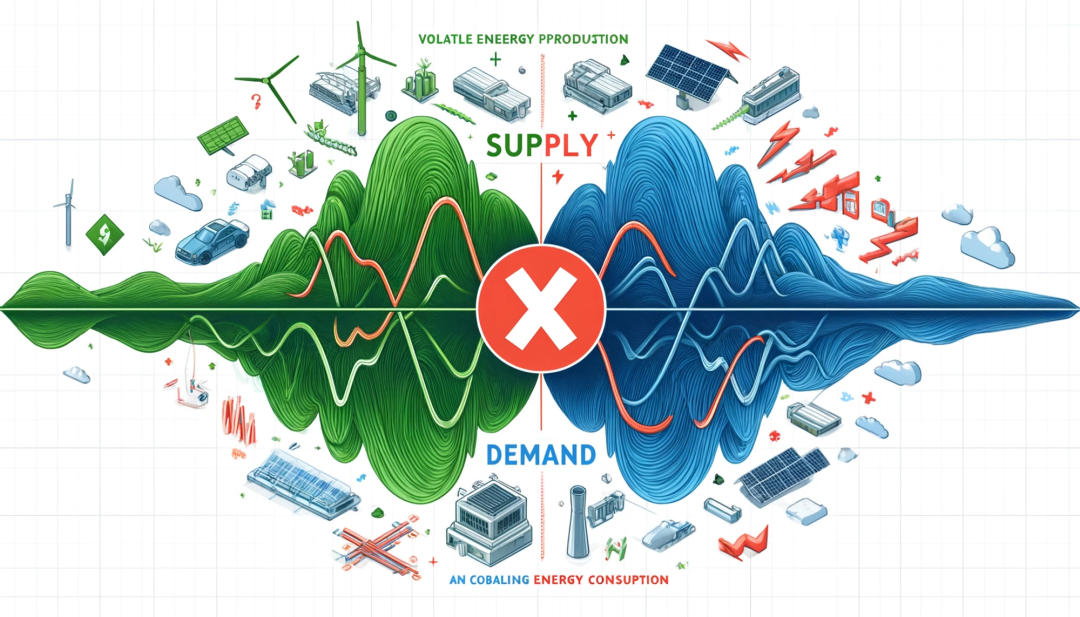
2.Transformation of the underlying logic of the new energy distribution network
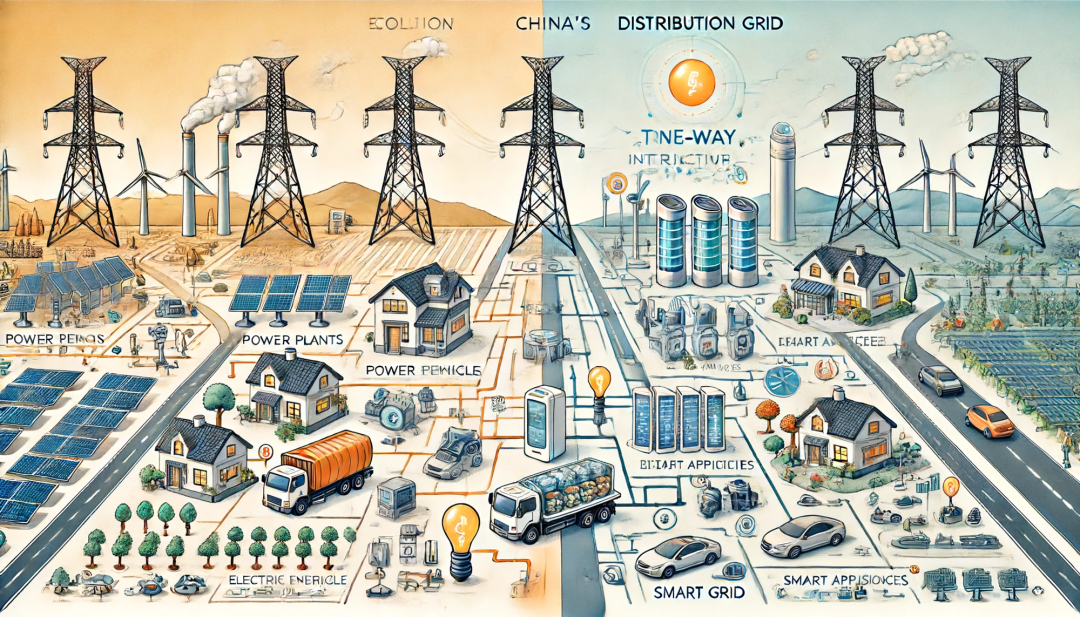
First, the current perception of the new power system:
With the advancement of the construction of new power systems, the distribution network is gradually from the simple acceptance, distribution of electricity to the user's power network into a source network load storage integration and interaction, flexible coupling with the upper power grid power network, to promote the distributed power supply close to the elimination of the function of carrying a new type of load is becoming increasingly significant.
"Carrying new types of loads" refers to the grid's ability to carry and manage new electricity demand, which mainly comes from electric vehicle charging, new smart home appliances, data centers, etc. These loads are characterized by high volatility. These loads are characterized by high volatility and concentrated electricity consumption, which puts higher demands on the stability and regulation capability of the grid. By improving the intelligence and regulation capability of the grid, it can better adapt to and manage the access and use of these new types of loads.
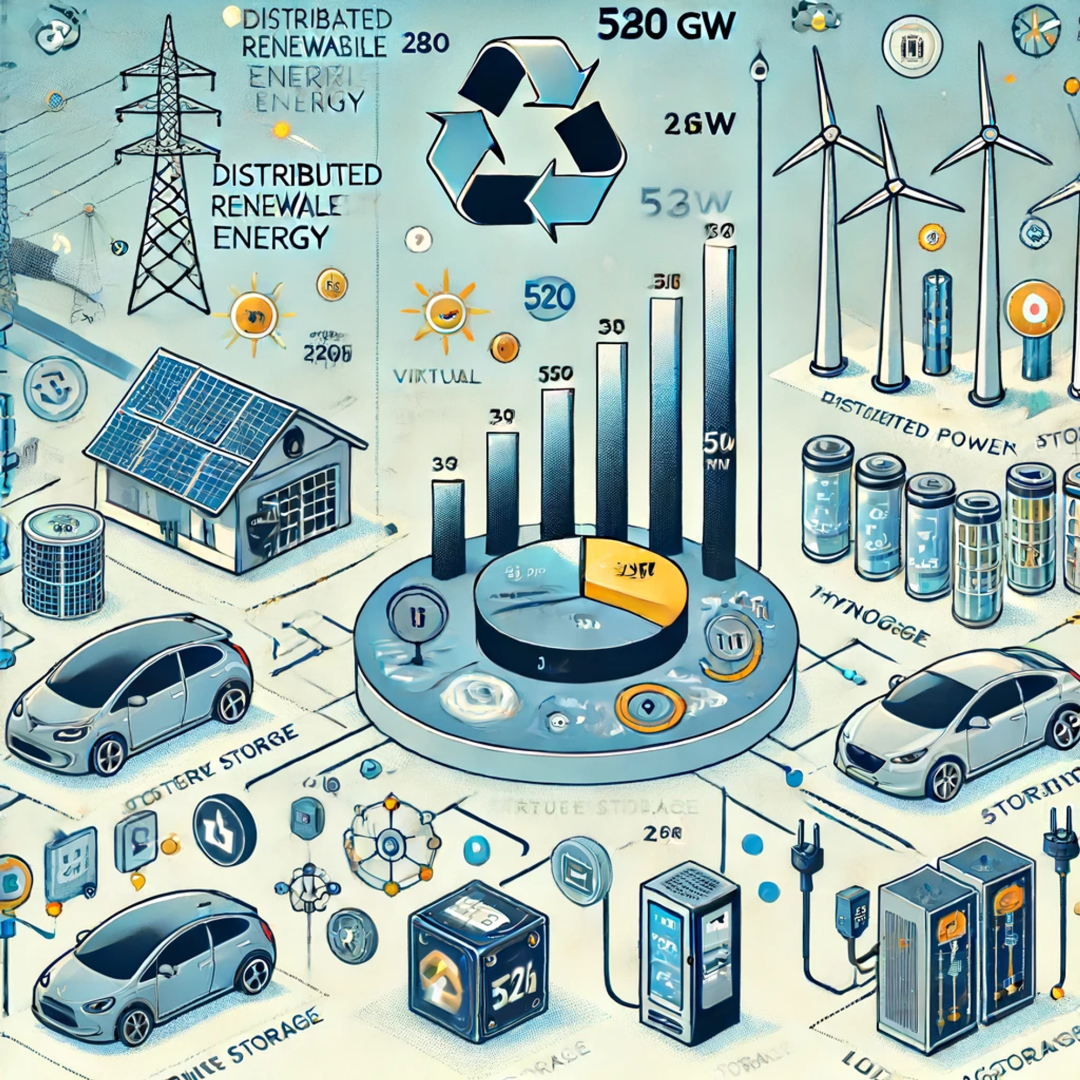
2.1 Several important development goals:
1. Promote the transformation of the distribution grid from a traditional "passive" one-way radiation network to an "active" two-way interactive system in terms of form, and from a single power supply and distribution service body to a platform for the efficient allocation of source-network-load-storage resources in terms of function.
2. By 2025, the carrying capacity and flexibility of the distribution network will be significantly improved, and there will be about 500 million kilowatts of distributed new energy and about 12 million charging piles with access capacity.
3, to 2030, basically complete the distribution grid flexible, intelligent, digital transformation, to achieve the main distribution micro-grid multi-level synergies, massive resources aggregation and interaction, multiple users plug and play, and effectively promote the integration of distributed smart grid and the development of large grids, to better meet the needs of distributed power supply, new types of energy storage and the development of various new industries.
Catch up on knowledge:
Distribution grid and transmission grid are both important parts of the grid, but they differ in function and location.
1.
Distribution grid: mainly responsible for the distribution of electricity from substations to individual users, including residential, commercial and industrial users. Distribution grids are directly connected to end-users at lower voltages (typically 35kV and below).
2.
Transmission grids: responsible for transmitting power between power plants and substations, usually at higher voltages (110kV and above) and with a wider coverage area, they are mainly used for long-distance, high-capacity power transmission.
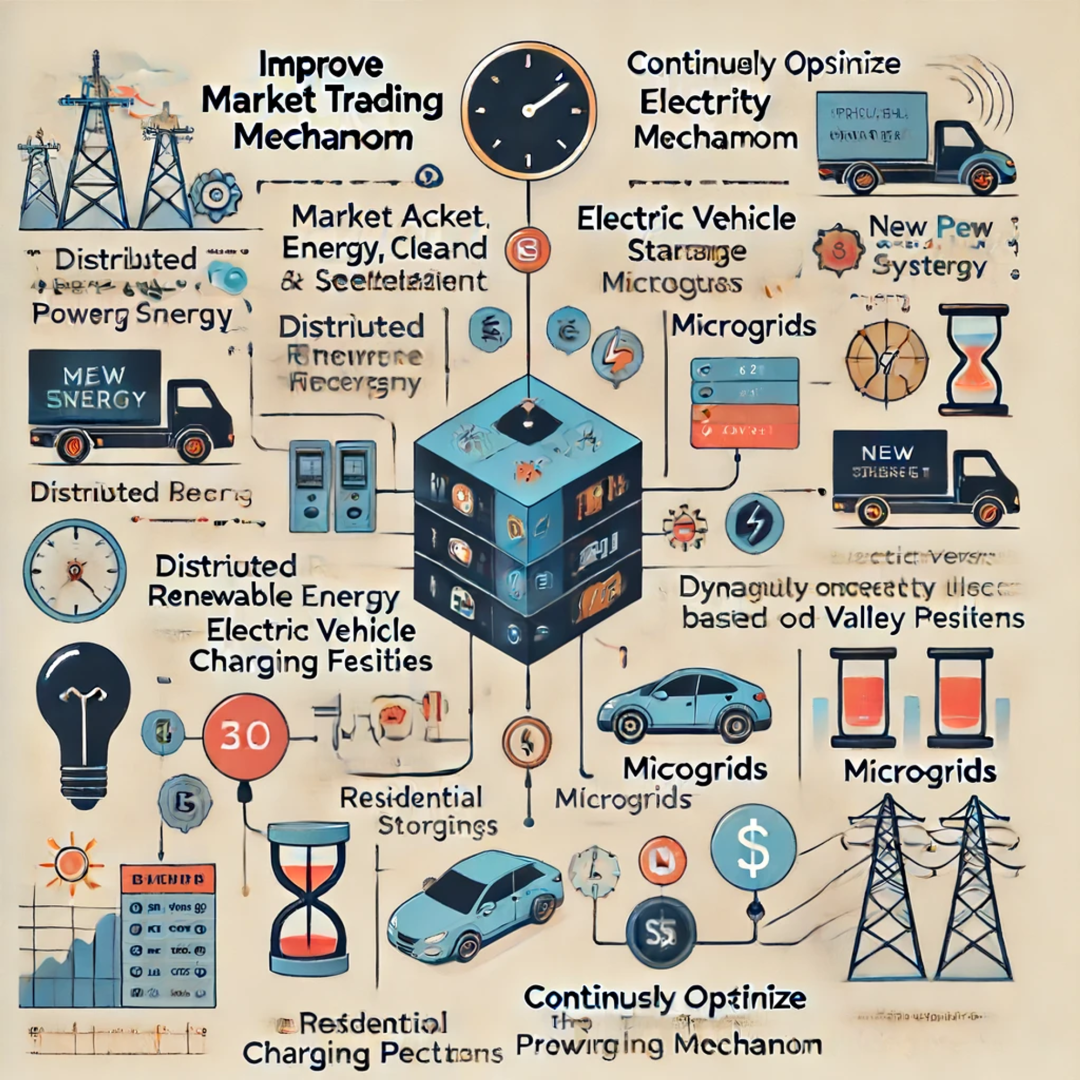
2.2 Aspects of specific measures:
1, to meet the demand for large-scale distributed new energy connection to the grid. How large-scale it is, is the previously mentioned 500 million kilowatts of distributed new energy, compared to the current national power generation installed capacity of 29.19 billion kilowatts, accounting for only 1.7%. Currently the total installed capacity of distributed power about 280 million kilowatts, the growth space is still very good.
2, to meet the large-scale electric vehicles and other new load power needs. According to the latest data, the number of public charging piles in the country is about 2.82 million units, while the total number of charging infrastructure (including public and private) is more than 9 million units. From the previously mentioned 12 million or so charging pile access capacity, there are good industry trends.
3, promote the diversified development of new energy storage. Guide distributed new energy according to their own operational needs reasonable allocation of new energy storage or through the sharing mode configuration of new energy storage, to enhance the ability of new energy reliable alternative, promote new energy consumption. ...... supports the safe development of user-side energy storage, strengthens metering management, realizes that it should be extracted as much as possible, and explores new scenarios of energy storage integration applications around distributed new energy, charging facilities, big data centers and other end-users, and supports participation in grid interaction. Promote the application of long-duration electric energy storage, hydrogen energy storage, and thermal (cold) energy storage technology.
4. Promote the healthy development of new business forms in the power system. Promote the construction of microgrids, clarify the physical boundaries, reasonably proportion the capacity of source and load storage, and strengthen independent peak adjustment and self-balancing capabilities. Tap the potential of user-side regulation, encourage the innovative development of virtual power plants, load aggregators, vehicle-network interaction and other new business models, and improve the system response speed and regulation capacity.
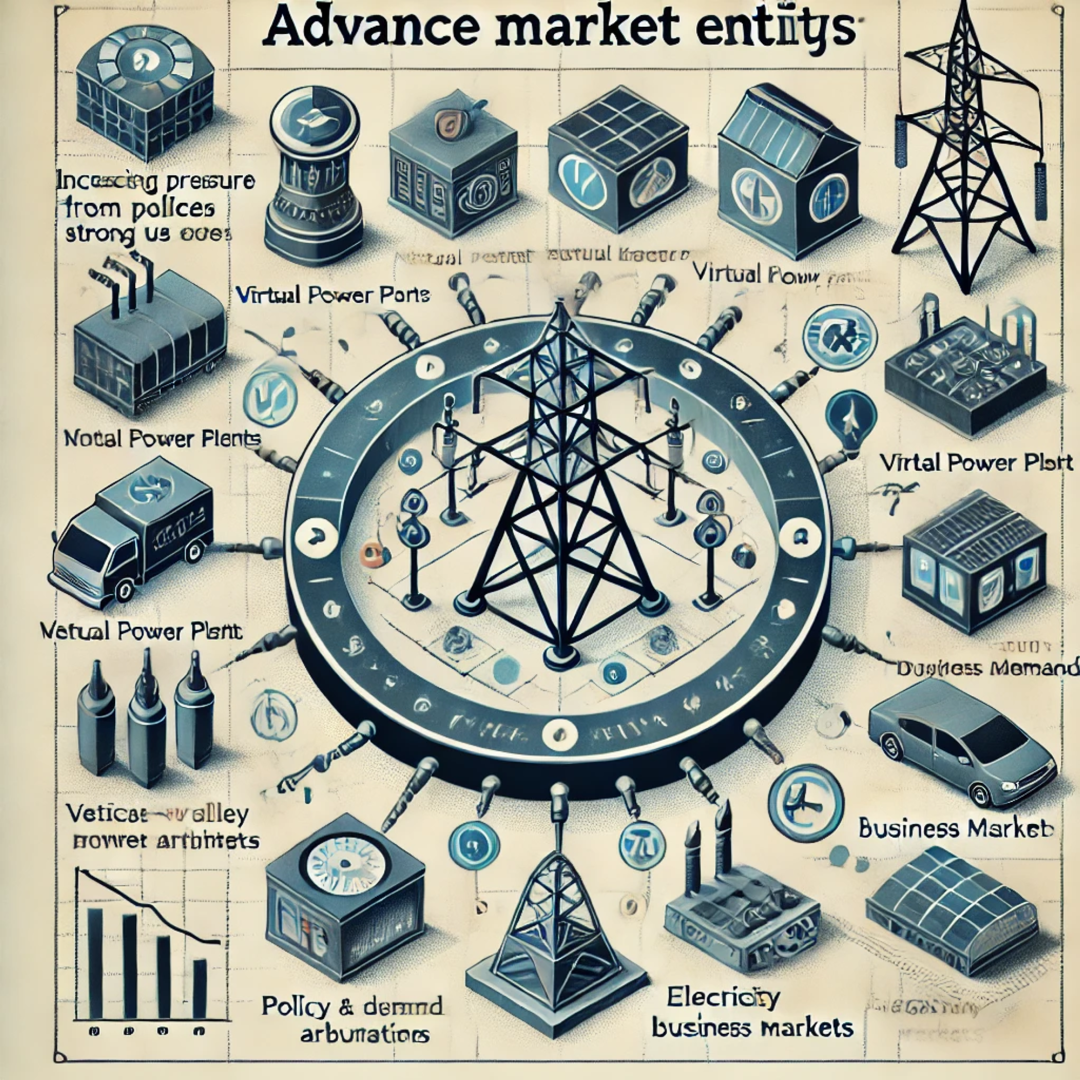
2.3 Not only that, but also put forward key ideas on market trading: 1. Improve the market trading mechanism. Clarify the market access, clearing and settlement standards for new subjects and new business forms such as distributed new energy, new energy storage, electric vehicle charging facilities, microgrids, virtual power plants, etc., study and design appropriate trading varieties and trading rules, and encourage diversified resources to participate in market transactions on an equal footing. Improve the multi-timescale and multi-level power market to meet diversified demands. Innovate and expand new power system business models and trading mechanisms, and create conditions for direct trading between industrial and commercial power users and distributed power sources, new energy storage and other subjects.2. Continuously optimize the electricity price mechanism. Further improve the time-sharing tariff mechanism, establish and improve the time-sharing tariff mechanism for residential charging piles for electric vehicles; the electricity spot market continues to operate in the region, and promote the dynamic adjustment of the division of peak and valley time periods according to spot price signals to improve the characteristics of users' electricity consumption. Study and improve the price mechanism for energy storage. In the assessment of distributed power generation market-oriented trading pilot based on research to improve better promote new energy near the consumption of transmission and distribution price mechanism.
3. Advance layout of new energy market players
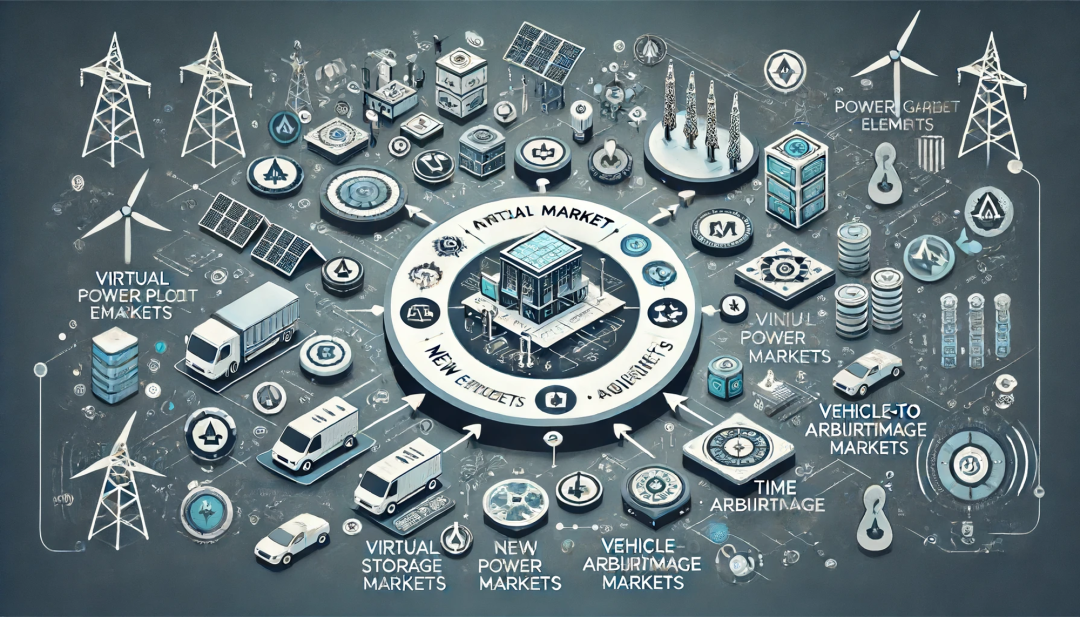
Many new subjects are not yet qualified to enter the electricity market, let alone spot trading. Therefore recreate a power demand-side market, and even the virtual power plant market, it becomes particularly important. Although they are artificial market, but better than before only peak and valley arbitrage, power trading will gradually transition to spot trading, fluctuations are greater, more frequent. The power demand side market, the virtual power plant market, is naturally for grid stability and services. Therefore, the distribution network reform of the heavy policy, can be said to hit the nail on the head, in line with the reality, in line with the people's hearts. The future for these new energy born in the new market players, of course, is very favorable. With the transformation of the underlying logic of the distribution network, the wall of electricity sales may no longer be so difficult, and the layout of the new market players in advance, to address the needs of the grid, the needs of the user, the needs of the market, is where the opportunity lies.
Boland Renewable Energy Co., LTD En tant que nouvelle société d'énergie intégrée, vous fournissant des solutions intégrées de haute qualité pour l'énergie éolienne, l'énergie solaire et le système de stockage d'énergie. Boland est maintenant une filiale de CRRC et est responsable de l'expansion à l'étranger de l'énergie éolienne de CRRC. & entreprise d'énergie solaire. Nous disposons d'une chaîne d'approvisionnement interne relativement complète, d'un réseau de service et d'une excellente qualité de produit et de technologie.
Boland fournit l'EPC de la centrale électrique, l'investissement et l'acquisition de la centrale électrique.
N'hésitez pas à nous contacter si vous avez besoin d'un support technique. Bravo pour notre coopération !
Mon email:marketing@boland-hydroturbine.com
WA:+8613923745989


